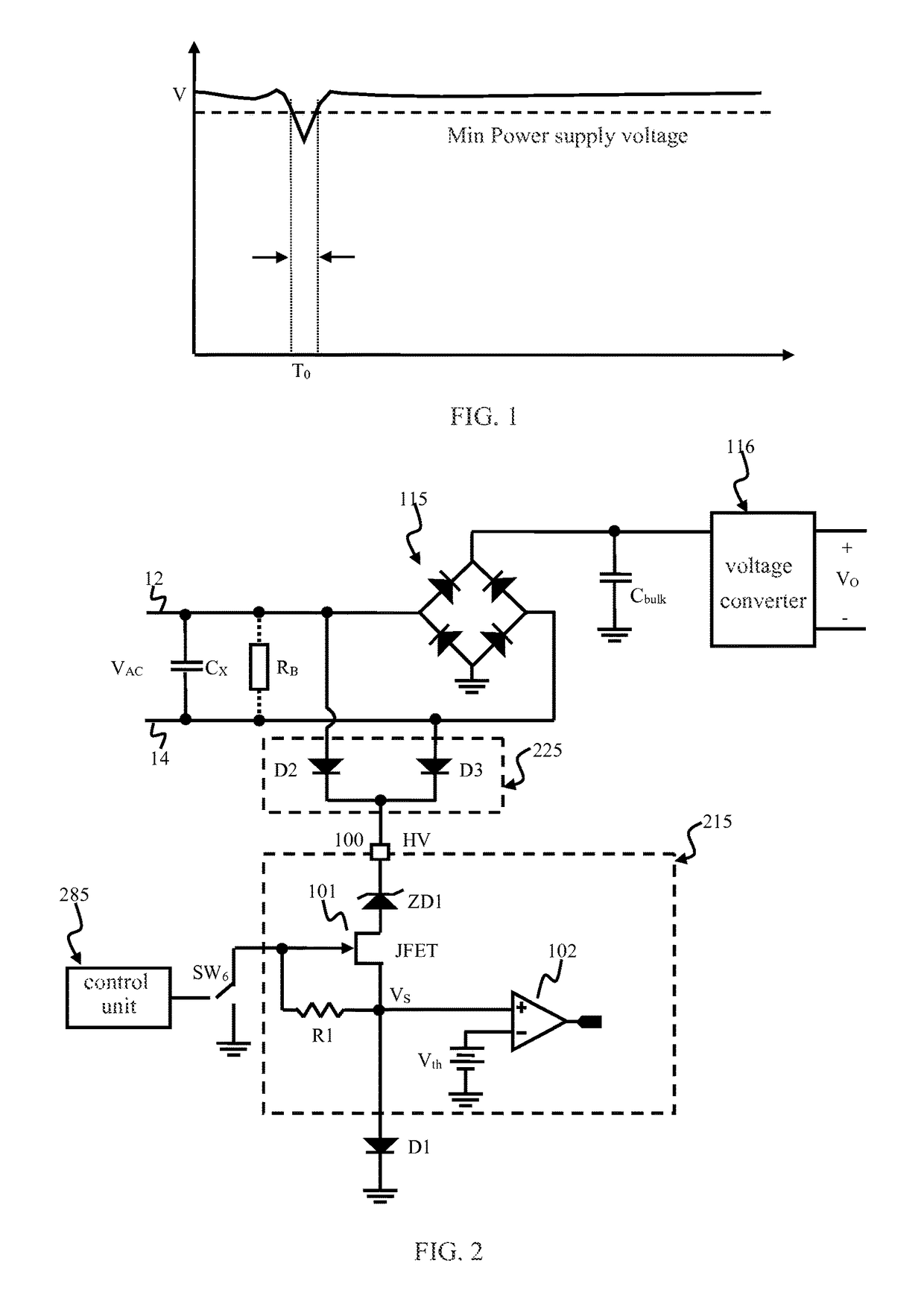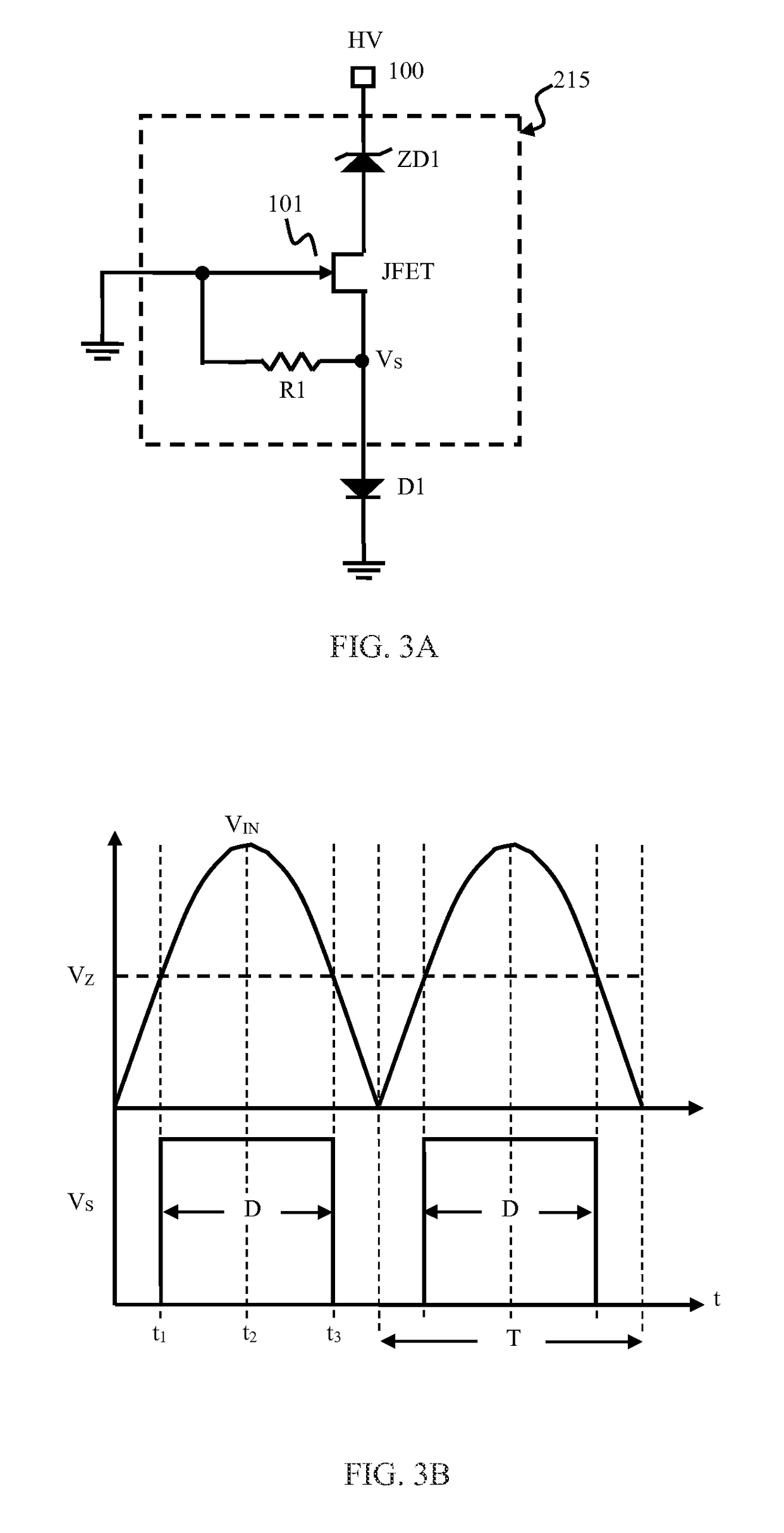Methods and devices for detecting the input voltage and discharging the residuevoltage
a technology of input voltage and discharge voltage, which is applied in the direction of frequency selective voltage/current level measurement, measurement using ac-dc conversion, instruments, etc., can solve the problems of resistors consuming power, flickering or dimming of displays, damage to ac-dc converters,
- Summary
- Abstract
- Description
- Claims
- Application Information
AI Technical Summary
Benefits of technology
Problems solved by technology
Method used
Image
Examples
Embodiment Construction
[0018]Referring to FIG. 2, a basic detection unit 215 mainly comprises a junction field effect transistor (JFET) 101 and a Zener diode ZD1, where the anode of the Zener diode ZD1 is connected to the drain of the JFET 101, and the source of JFET 101 is connected to the anode of a diode D1, while the cathode of diode D1 is connected to the ground. In addition, an electronic switch SW6, which is a main switch, is connected between the control terminal, such as the gate of JFET 101 and the ground. Switch SW6 is a three port device having a control terminal coupled to a logic control unit 285 with one end connected to the gate of JFET 101 and the other end connected directly to the ground. When the switch SW6 is on or off, the control unit 285 determines whether the gate of JFET 101 is connected to the ground potential. A resistor R1 is connected between the gate and source of JFET 101. An input DC voltage VIN is fed to the detection unit 215 at node 100 connected to the cathode of the Z...
PUM
 Login to View More
Login to View More Abstract
Description
Claims
Application Information
 Login to View More
Login to View More - R&D
- Intellectual Property
- Life Sciences
- Materials
- Tech Scout
- Unparalleled Data Quality
- Higher Quality Content
- 60% Fewer Hallucinations
Browse by: Latest US Patents, China's latest patents, Technical Efficacy Thesaurus, Application Domain, Technology Topic, Popular Technical Reports.
© 2025 PatSnap. All rights reserved.Legal|Privacy policy|Modern Slavery Act Transparency Statement|Sitemap|About US| Contact US: help@patsnap.com



